
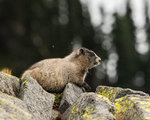
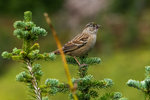
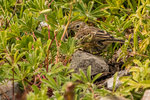
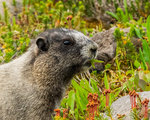
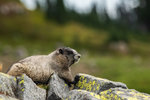
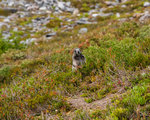


Most of the year, Mount Rainier is a sleeping giant with a blanket of snow and a pillow of clouds.
In ephemeral late summer, the mountain reminds us it’s teeming with life. Especially at Paradise, visitors can get the full scope of the ecosystem.
Take the hike to Reflection Lakes, for example. Beginning at Paradise Inn, hikers pass chipmunks and ravens as they climb toward meadows. The trail begins, passing marmots and pikas. If it’s not a busy morning, there may even be black bears.
Descending into the treeline, guests can see birds galore. In lower fields, deer are munching on grass. Snakes basking in the sun hear the hikers approach and slither away.
If there wasn’t a mountain behind them and pristine alpine lakes to experience, adventurers could spend an entire visit to Mount Rainier National Park just observing the critters.
For those who think that sounds fun, here is a guide to experiencing some Cascadian creatures at Paradise, compiled with information from the park’s website.
Starting small but spirited, the most commonly heard creature on the trails at Paradise is likely the American pika. According to the park’s website, over 900 individual pika sites have been found around Rainier since 2007.
Around the size of a large mouse, the pika is technically not a rodent, but belongs to the same family as rabbits. They nest in rocks, digging tunnels underneath to store food. Visitors are more likely to hear the pika’s high-pitched squeal than they are to see the tiny-yet-adorable creatures.
Next, the marmot.
Hoary marmots are very common in subalpine regions in North America. During September, hikers can see them stain their cheeks purple with blueberries. Because the housecat-sized creatures hibernate, they spend the fall fattening up. When they aren’t eating, they are often basking in the sun on rocks. Sounds like a pretty good life.
Like pikas, marmots have a telltale sound, much like a whistle. This signals to the others in their colony that something dangerous is nearby.
While pikas and marmots are often prey for raptors and larger creatures, the mountain goat is one huge resident of Rainier the smaller animals can trust.
Because of their shaggy hair, mountain goats live at high altitudes year-round. Incredible climbers, they are often seemingly defying gravity on cliffsides. They are herbivores, feeting on moss, grass and shrubs, much like the other hooved animals of the park, elk and deer.
Black-tailed deer are found throughout the park and are most active near dawn and dusk. Elk are harder to find in high elevations during fall as they make their way down the mountain, but are easily found in the low mountain towns of Ashford, Randle or Packwood.
During late summer, black bears are making their way up the mountain for hibernation as they feed relentlessly on berries and campsite leftovers. Guests should always keep items with scent in bear cans and dispose of all trash and extra food to avoid attracting bears when camping or backpacking.
Along with bees, butterflies, snakes and birds, the creatures of Mount Rainier seem endless during early fall, and visiting them is worthwhile. Park rangers use citizen-reported data to study the wellbeing of climate change sensitive mountain life.
To report a creature sighting at the park, visit https://arcg.is/rLOiy. For more information on flora and fauna at Rainier, head to https://www.nps.gov/mora/learn/nature/index.htm.